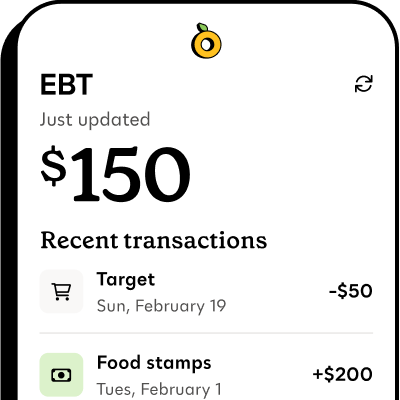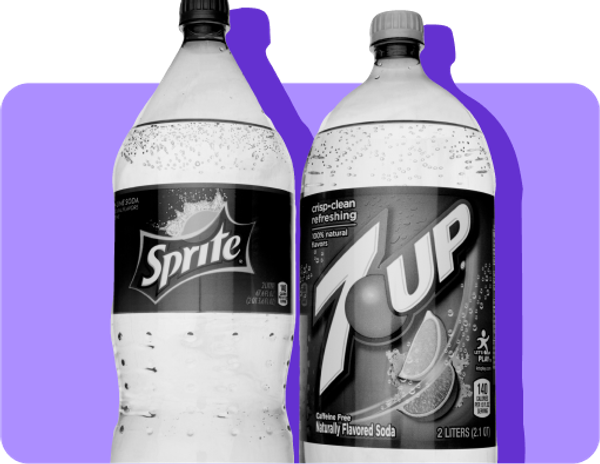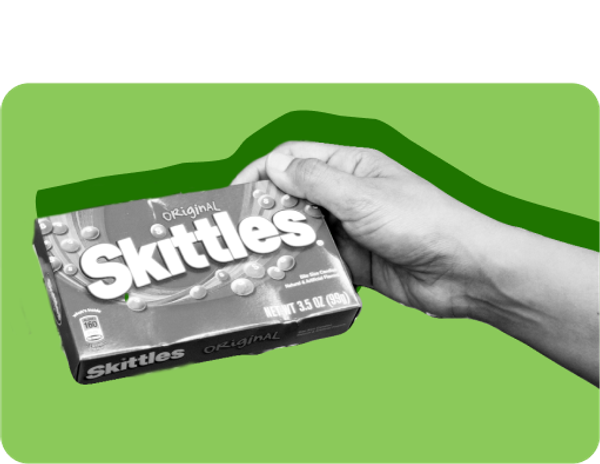

Additional expert review by
- 1. Determine your household size
- 2. Calculate your household’s total monthly income
- 3. Gather your documents
- 4. Submit your application
- 5. Complete a SNAP phone interview with an eligibility worker
- 6. Submit any missing documents
- How long does it take to start getting benefits?
- Know your rights as a SNAP applicant
Table of contents
- 1. Determine your household size
- 2. Calculate your household’s total monthly income
- 3. Gather your documents
- 4. Submit your application
- 5. Complete a SNAP phone interview with an eligibility worker
- 6. Submit any missing documents
- How long does it take to start getting benefits?
- Know your rights as a SNAP applicant
Each state manages their own food stamps program, but the basic application steps are similar.
Here's what you need to know about applying for SNAP (also called food stamps):
SNAP eligibility is determined by who you live and share food with, including how old your housemates are, their disability status, income, and expenses. During the application process, an eligibility worker from your state or county SNAP agency will verify these facts and determine the amount of benefits your household will receive.

Propel is the #1-rated EBT balance checking app
1. Determine your household size#1-determine-your-household-size
SNAP considers your household to be the people you regularly buy and cook food with, since that's who you share a grocery budget with.
Beyond the people you share meals with, there are others who most states require that you include in your SNAP household even if you don’t split groceries with them:
- Your spouse
- Children under 22 living with parents
Living with roommates? If you buy and cook food separately, you can apply for SNAP on your own.
In general, if you’re not sure who to put on your application, it’s best to include everyone you think might be in your household and consult the eligibility worker during your SNAP interview.
2. Calculate your household’s total monthly income#2-calculate-your-households-total-monthly-income
Income, meaning how much money you get each month, is one of the most important factors for SNAP eligibility. Here’s what matters when you apply:
- Your income from the last 30 days
- Income you expect to get going forward
In most states, your assets (which include any savings, retirement accounts, or property) don't affect food stamp eligibility. Only 13 states consider assets when it comes to SNAP eligibility. Most states also do not count vehicles or homeownership when determining if you qualify for SNAP benefits.
SNAP application tip
Lost your job recently? You might qualify for SNAP now even if you didn't before.
How does SNAP define income?#how-does-snap-define-income
For SNAP eligibility, states look at your gross income: the money you get before taxes. To pass this test, your monthly gross income must be under the limit for your household size. These limits are different in each state.
You might have special income rules if your household includes:
- Gig workers (like drivers for DoorDash or Uber)
- College students
- Seniors over 60
- People with disabilities
- People with different immigration statuses
Even if you're over the regular gross income limit, you might still qualify under these special rules.
Monthly gross income limit by household size:
- 1 person: $1,580
- 2 people: $2,137
- 3 people: $2,694
- 4 people: $3,250
- Each extra person: Add $557
Your gross income includes:
- Work pay before taxes
- Self-employment earnings
- Child support received
- Unemployment benefits
- Other money received from any sources in the last 30 days
While your gross household income decides if you qualify for SNAP, your expenses determine how much you get each month (your SNAP benefit award amount).
You can report these expenses on your application to increase your benefit amount:
- Rent, mortgage, or other housing costs
- Utility bills
- Childcare costs
- Dependent care costs
- Medical expenses (for seniors and people with disabilities)
SNAP application tip
Submit proof of these expenses when you apply. They can mean higher monthly SNAP benefits.
3. Gather your documents#3-gather-your-documents
Some states will require more documents than others to verify your household information. At minimum, you'll need proof of:
- Identity (like a driver’s license or birth certificate)
- Social Security Number or card (if you have one)
- Proof of income (like pay stubs)
- Address
- Living expenses (optional)
- Immigration status (if applicable)
Keep copies and take screenshots of everything you submit.
4. Submit your application#4-submit-your-application
The fastest way to apply for SNAP is online, through your state's benefits website. You can also apply:
- In person at your local office
- By mail
- By phone
Need help in another language? Ask your SNAP office or a local legal aid or community services organization for free interpreter services and application assistance.
SNAP application tip
Want to save time? Skip the eligibility screener and go straight to the application on your state benefits portal. You'll find out if you qualify without entering your information twice.
Once you submit the application form, an eligibility worker from your state or county SNAP agency will start processing your application.
Under certain circumstances—for instance, if you have no income right now and very little or no cash on hand—you may be able to get food stamps in seven days or fewer through emergency (expedited) assistance.
5. Complete a SNAP phone interview with an eligibility worker#5-complete-a-snap-phone-interview-with-an-eligibility-worker
After applying, you'll have a phone interview. Interviews are required for all SNAP applicants. Most states default to doing interviews on the phone, but you can always request to do an in-person interview. On the call, the eligibility worker will:
- Review your SNAP application and clarify anything that’s unclear on your application (for instance, about your income or housing situation)
- Tell you what other documents they need, if any
- Answer any questions you have about SNAP
Don't worry—it's not a test. The eligibility worker is just trying to make sure that the information you submitted on your application is accurate. Some interviews can take as little as five minutes, for instance, if you’re just applying for SNAP for yourself and don’t have any questions for your eligibility worker. In other cases, the call might take 30 minutes or more (for instance, if you have a more complicated housing situation).
Most states schedule an interview time for you, but 16 states interview "on-demand," meaning you have to call the office. In some states, it can be hard to get your interview scheduled, but we have tips that can help.
SNAP interview tips
- Make sure you know whether you need to call in for your interview, or if the agency will be calling you
- If your interview is already scheduled, make sure you know the date and time
- Pick up all phone calls when you're expecting an interview (the agency may call from a blocked or restricted number)
In most states, your application will be denied if you don't complete the phone interview within 30 days of submitting your application. This means that it’s critical that you call and get your interview done, even if you have to wait on hold. For interview assistance, see our ‘know your rights’ tips below.
6. Submit any missing documents#6-submit-any-missing-documents
Can't get a document they asked for in your SNAP interview? Eligibility workers can:
- Help you get the documents
- Accept signed statements from others who can verify your information
- Take your signed statement instead (in some cases)
In some special cases, SNAP agencies can require specific documents, including immigration documents from non-citizens. If you need help getting these documents, ask an immigration lawyer or your local legal aid organization for help.
How long does it take to start getting benefits?#how-long-does-it-take-to-start-getting-benefits
If you’re eligible for SNAP benefits, states are required to approve your application within 30 days (or seven if you qualify for expedited assistance). That means you will receive an Electronic Benefits Transfer (EBT) card in the mail, loaded with your benefits and ready for use, within 30 days of submitting your application.
After setting a PIN, you’ll be able to use your new EBT card just like any other debit card at grocery stores that accept EBT— even in different states (though if you move to a different state, you have to close your account and reapply in your new state). Remember that SNAP benefits can be used on SNAP-eligible items—like milk, eggs, meat, and snacks—at most grocery stores.
You’ll get your benefits every month on the same day. Your remaining balance at the end of each month will roll over to the next. You can stay on top of your balance and secure your card using an app like Propel.
Renewing your SNAP benefits#renewing-your-snap-benefits
Once your SNAP application is approved, you'll need to renew your SNAP benefits to make sure you don’t lose your benefits. Most states approve SNAP for six months at a time. Sometimes your eligibility period is 12 months or longer or less than six months.
Your state will mail you notices about your benefits, including when it's time to renew.
Important tips to stay enrolled in SNAP:
- Update your address if you move so you don't miss important letters from your state SNAP agency
- Submit renewal paperwork by the deadline to keep getting benefits (in most states, you can do this through the online benefits portal)
Know your rights as a SNAP applicant#know-your-rights-as-a-snap-applicant
Help is available if you’re having trouble enrolling in SNAP. You have these legal rights when applying for food stamps:
- Right to assistance: You can get free help from family or friends, community organizations or advocacy groups, legal aid groups, or SNAP office employees. Usually, you or your representative must sign and submit your application. In some states, eligibility navigators can submit for you with your signed or verbal consent.
- Right to choose a representative: You can designate someone to help you apply, help you interview, and help use your EBT card once you get it.
- Right to language access: You must be able to access forms and materials in your language.
- Right to accommodations for disabilities: You must be able to request disability accommodations.
- Right to apply without discrimination: Discrimination based on gender, race, age, religion, or other protected status is illegal. To report discrimination in the application process, call (202) 720-5964.
If you were denied benefits or treated unfairly, you have options:
- Request a fair hearing—your denial letter explains how to appeal
- Contact legal aid for free help from lawyers who can help you win your appeal
- Try your state Ombudsman if available (MA, TX, NH, KY, OR, and AZ have Ombudsman offices that handle benefits-related cases)
- Contact your elected representative
These groups can help challenge the decision. In the meantime, re-apply right away to get your case evaluated again.






